Tue 22 Jan 2013
Planning the Veggie Garden: 2013
Posted by Bob under Vegetable Garden
No Comments
2013 will mark our fifth vegetable garden in Virginia. Based on the first four years, the one predictable thing is unpredictability. Each year has been totally unique, with its own challenges and rewards. 2012 was marked by a violent spring hailstorm, and an early summer derecho which flattened much of our forest and parts of the garden, and unusually long dry hot periods. So who knows what the inauspiciously-named 2013 will bring?
Seed catalogs started flooding in even before Thanksgiving, and I now have a basic plan for the spring and summer gardens. For those interested in such things, here are a few new directions:
Focusing on Softneck Garlics. Garlic was the first thing planted for this year’s garden; it went in last September. But based on several years of significant spoilage of hardneck garlics (which I have favored because of their easy-to-use large cloves and their unique flavors), I mainly planted softneck garlics this time around: some from bulbs I’ve grown for several years (Inchellum Red and S&H Silverskin) and a new softneck, Polish Red, which is supposed to have the virtues of excellent storage capacity and a bulb structure much like a hardneck, i.e. fewer but larger cloves. Hopefully this year’s harvest will get me through to the next year’s, a goal that I’ve never quite reached yet.
Experimenting with Hybrid Tomatoes. I’ve always resisted hybrid plants in favor of heirlooms (and would never grow genetically-modified ones), but several years of Fusarium Wilt and premature die-offs of tomato plants as early as June convinced me this past year to go out looking for hybrids with disease resistance. Since by then it was late June, the pickings were slim and the plants scrawny. But the ones I planted came back to life and started producing in late August and continued well into October, without any evident disease problem. Taste was good, though not exceptional. So I’ve ordered seeds for five hybrid tomato varieties to try out, along with the more successful heirloom varieties I’ve been growing. It’s a compromise I’m not entirely happy with, but the alternative hasn’t been happy either. I’m also trying some hybrid squash seeds, after some unhappy experiences with cucumber and squash bugs.
Growing More Cowpeas and Dry Beans. I grew cowpeas for the first time this year, and both Monika and I really like them. In fact, we used a bunch of them tonight, along with the remaining collards still growing in the garden, to make Hoppin Johns, a classic southern recipe that we make pretty regularly. Cowpeas originated in Africa and constitute a unique botanical family: vigna unguiculata (somehow that doesn’t sound appetizing, but they are). Baker Creek Heirloom Seeds has the best selection, and in addition to sticking with Six-Week Purple Hull cowpeas, I’m adding Monkey Tail and Haricot Rouge Du Burkina Faso, which together will provide a nice range of colors; creamy to deep tan to reddish-brown, all with a pink or black and white eye. (The new ones were chosen partly for the fact that they are supposed to be climbers, and hopefully will scramble up my trellises rather than sprawl extensively on the ground, which many varieties do.) I’m also trying two bean varieties that dry on the vine and are then shelled, much like cowpeas. A great virtue of both cowpeas and dry peas is that they are virtually ready for storage once you pick and shell them. And they look handsome in glass jars on the kitchen counter!
Trying New Varieties of Old Favorites. I’m a sucker for trying out new varieties of vegetables and herbs I always grow, such as snap beans, cucumbers, cilantro, etc. Since there are many more varieties of bush beans than pole beans, I’m trying several of these, along with such things as Prize Choy, lemongrass, Turnip Boule D’Or, and more.
Planting a New Crop: Sweet Potatoes. I like to try something new each year (last year it was peanuts and cowpeas), and inspired by the huge (and tasty) sweet potatoes of our friend Axel Goetz, I’m planning to try two heirloom varieties, most likely from the quite amazing couple that run Sand Hill Preservation Center in Iowa. They are preserving and selling close to 200 varieties of sweet potatoes alone.
Producing Chicken-Friendly Excess. Needless to say, we grow a lot more than we can eat, even after freezing or canning it. But our chickens are happy to oblige in disposing of the excess, so we do keep an eye on what they like or is particularly healthy for them. Partly for that reason, I’m planning a significant patch of broccoli in the spring, since they love the stems. (They probably love the flower heads too, but they’re reserved for us.)
The attached list is mainly for my records, but anyone interested in my seed list for 2013 may click on more below.
Spring/Fall Garden
Broccoli Waltham
Cilantro Slo-Bolt
Collards Green Glaze
Lettuce Cracoviensis
Lettuce Red Romaine
Lettuce mix from local friends Anke & Axel Goetz
Parsley
Prize Choy
Pea: Sugar Snap, Avalanche Snow.
Radish Red Meat (Watermelon)
Rutabega Joan
Spinach Renegade
Swiss Chard Five Color
Turnip Boule D’Or
Summer Garden
Basil Genovese
Basil Siam Queen Thai
Beans (Snap): Empress (bush); Fortex (pole), Pencil Pod Golden Wax (bush); Chinese Red Noodle (pole); Kentucky Wonder (pole).
Beans (Dry): Brockton Horticultural; True Red Cranberry
Beans (Lima): Henderson (bush)
Cowpeas: Haricot Rouge; Monkey Tail; Six-Week Purple Hull.
Cucumber: Telegraph Improved; Barden Sweet Burpless
Lemongrass (to be sown inside in January)
Peppers: Tolli’s Sweet Italian, Ruby King
Potatoes
Summer Squash: Park Summer Medley (hybrids), Zucchini Rampicante, Spaghetti
Sweet Potatoes
Winter Squash: Waltham Butternut, Thelma Sanders (acorn)
Tomato (heirloom): Cherokee Chocolate, Dr. Wyche’s Yellow, Granny Cantrell, Green Zebra.
Tomato (hybrid): Better Boy VFN, Phoenix VFFA, La Roma III VFFNA, Super Marzano VFNT, Sweet Chelsea VFNT
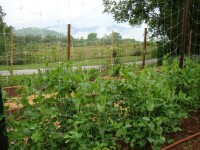
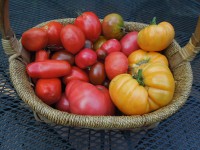
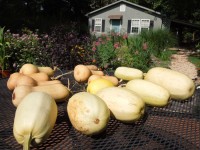
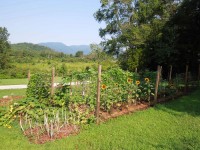
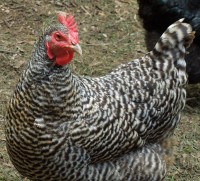
No Responses to “ Planning the Veggie Garden: 2013 ”